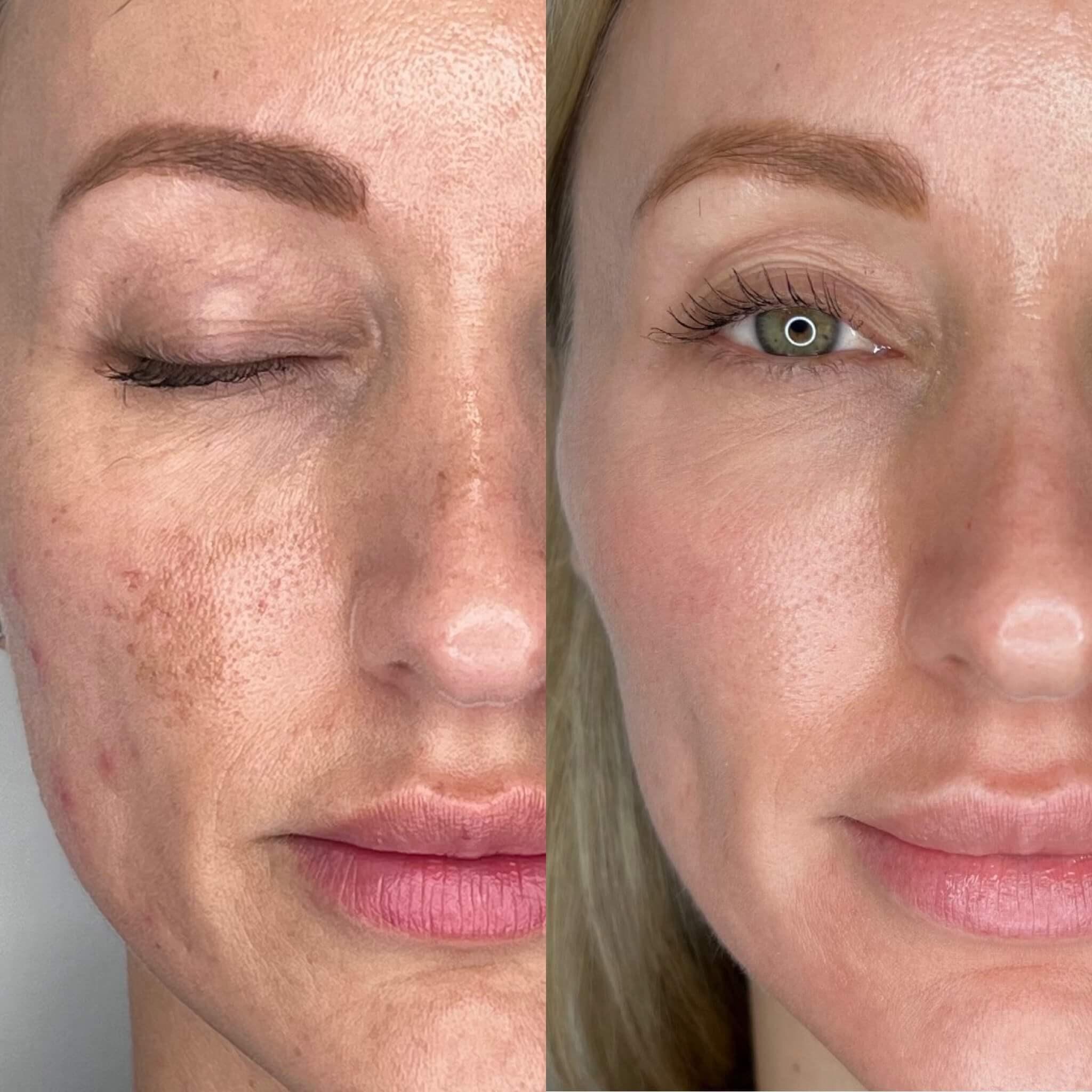Understanding Melasma: Causes, Treatment Options, and Prevention
7/31/2024
Understanding Melasma: Causes, Treatment Options, and Prevention
What is Melasma?
Melasma is a common skin condition characterized by dark, discolored patches on the skin. It predominantly affects the face, particularly the cheeks, forehead, nose, and upper lip. Melasma can also appear on other parts of the body that are frequently exposed to the sun, such as the forearms and neck.
Causes of Melasma
Melasma's exact cause is not fully understood, but several factors contribute to its development:
Sun Exposure: Ultraviolet (UV) rays from the sun stimulate the melanocytes in the skin to produce more pigment, leading to the formation of melasma.
Hormonal Changes: Pregnancy, birth control pills, and hormone replacement therapy can trigger melasma due to changes in hormone levels.
Genetics: A family history of melasma increases the likelihood of developing this condition.
Medications: Certain medications can make the skin more sensitive to sunlight, increasing the risk of melasma. These can include some antibiotics, anti-inflammatory drugs, and blood pressure medications.
Thyroid Disorders: There is some evidence to suggest a link between thyroid disorders and melasma. Hypothyroidism and hyperthyroidism can affect hormone levels, which may contribute to the development of melasma.
Emotional and Physical Stress: Stress can have various effects on the body, including hormonal imbalances, which may contribute to the onset or worsening of melasma.
Highly Effective Topical Treatment Options for Melasma
Treating melasma can be challenging, but several effective options are available:
Hydroquinone: This bleaching agent is often the first line of treatment for melasma. It works by lightening the dark patches.
Retinoids and Corticosteroids: These can be used in combination with hydroquinone to enhance its effects.
Bakuchiol: This agent helps reduce pigmentation and are often used in conjunction with other treatments.
Chemical Peels: Superficial chemical peels using glycolic acid, salicylic acid, or lactic acid can exfoliate the skin and reduce melasma pigmentation.
Preventing Melasma
Prevention is crucial in managing melasma. Here are some effective strategies:
Sun Protection: Use a broad-spectrum sunscreen with SPF 30 or higher every day, even on cloudy days. All ZO skin health sunscreens provide triple spectrum protection. Wear wide-brimmed hats and seek shade whenever possible.
Avoid Hormonal Triggers: Discuss alternatives to birth control pills or hormone replacement therapy with your healthcare provider if they trigger melasma.
Medical Grade Skincare Routine: Incorporate medical grade products with antioxidants and exfoliants to maintain healthy skin and prevent pigmentation.
Living with Melasma
Living with melasma can be challenging. Therefore, we have developed the right treatment protocol and preventive measures to help you manage the condition effectively!
Here are some additional tips:
Consistency: Stick to your treatment plan and be patient. Melasma treatment takes time, and consistent application of prescribed products is key to seeing results.
Healthy Lifestyle: Maintain a balanced diet, stay hydrated, and manage stress levels to support overall skin health.
Consult a Skin Professional: Regular check-ups will help monitor your progress and adjust treatments as needed.
Elite Styles: Your Partner in Melasma Treatment
Here at Elite Styles, we specialize in treating hyperpigmentation and have the results to prove it. Our experienced team uses advanced techniques and personalized treatment plans to help you achieve clear, even-toned skin. Whether you’re dealing with melasma or other forms of hyperpigmentation, we’re here to help.
Conclusion
Melasma is a common yet manageable skin condition. Understanding its causes, exploring effective treatment options, and taking preventive measures can significantly improve the appearance of your skin. If you’re struggling with melasma, schedule a consultation with us to develop a personalized treatment plan tailored to your skin’s needs. Remember, consistent care and protection are vital in achieving and maintaining clear, even-toned skin.
Contact us today to learn more about our melasma treatments and start your journey to healthier, radiant skin!
&srotate=0)